The many sources of drinking water pollution
November 2021
When we turn on the tap, we expect our water to be clean and safe. But even though most tap water in the U.S. gets a passing grade from the federal government, concerns about water quality remain.
Much of our nation's tap water comes from rivers, streams, lakes and groundwater. Many water utilities spend an enormous amount of time and money on treatment or purification processes, because our water sources can be so polluted that basic water treatment does not remove all contaminants.
For water providers, protecting water sources and watersheds from pollution is smart economics. Keeping contaminants out of water in the first place is more cost-effective than having to remove them year after year.1
Yet there are major gaps in the resources available for drinking water and source water protection. Federal programs that allocate grants and low-cost loans to the prevention of water pollution and protection of rivers, streams and groundwater don't receive the support they need.
Where does the pollution come from? Here are a few of the main sources of water contamination:

Agriculture
Agricultural activities are one of the main sources of water pollution in U.S. rivers, streams, lakes, wetlands and groundwater. Each year, farm operators apply more than 12 million tons of nitrogen fertilizer and 8 million tons of phosphorous fertilizer to cropland, some of which runs off into water sources.
Manure is another important source of water contamination. It's estimated that livestock produce up to 1 billion tons of manure each year, and runoff from farms and feedlots can be laden with sediments and disease-causing microorganisms. And many pesticides have no federally mandated limits for drinking water, so utilities and their customers have no benchmark to know whether the amount of a specific pesticide in water is safe.
Many water utilities in farm country are forced to treat water supplies to remove agriculture-related pollutants, often relying on expensive processes such as activated carbon treatment and ion exchange. Despite utilities' efforts, agricultural contaminants are detected in the drinking water served to millions of Americans each year.

Industry
The Environmental Protection Agency's Toxics Release Inventory reporting program shows that in 2019, U.S. industries and businesses discharged 204 million pounds of chemicals into rivers and streams, some of which serve as sources of drinking water.2 Despite treatment, utilities have detected hundreds of industrial chemicals in finished tap water. Many of these chemicals can legally be present in our drinking water at any concentration, because federal and state authorities have not set enforceable limits.

Urban areas and suburban sprawl
Wastewater and storm water runoff are laced with the pollutants from urban areas and suburban sprawl � chemicals from vehicle emissions, road surfaces, yards and homes.
Scientists are also finding that rivers, streams and, therefore, drinking water are contaminated with traces of prescription medications, antimicrobial chemicals such as triclosan, household pesticides, flame retardants, gasoline additives and other chemicals scientists have linked to harmful health impacts. Pharmaceuticals and personal care product chemicals are excreted in human urine or washed down the drain. Many are not eliminated by standard treatment processes at wastewater treatment plants.3
As the U.S. population grows, and more land is cleared for homes and agriculture, the number of contaminants polluting lakes and rivers increases, according to a 2012 U.S. Geological Survey study of nine watersheds across the country.4 That, in turn, may result in more tap water pollution.
Without a national, coordinated initiative to control pollution from sprawl, municipal water users should continue to expect many of these pollutants in their drinking water.

Water treatment, storage and distribution
Agricultural and urban runoff is the main source of organic matter, and thus the primary contributor to excessive levels of disinfection byproducts in tap water. Scientists have identified more than 600 disinfection byproducts in treated drinking water,5 some of the most common of which have been linked to DNA damage and cancer.
Water tanks and pipes in the distribution system, including pipes in the home, also add contaminants to drinking water, such as lead, copper and chemicals that can leach out of plastic piping. Lead from pipes and lead-based solder can leach into water, and storage tanks and pipes lined with asphalt or coal tar chemicals have been linked to cancer.
The EPA estimates that more than $600 billion in water infrastructure improvements are needed over the next 20 years.6 Although much of this amount is needed for basic rebuilding of our nation's deteriorating water system, it will also help tremendously to decrease contaminants leaching from aging pipes into drinking water.

Naturally occuring contamination
Not all water contamination is caused by human activity. Some of it occurs naturally, but the amounts of contamination in water can be increased due to the conversion of natural areas to mining operations and agricultural and housing developments.
Radioactive chemicals, metals and other elements are natural components of soil and rocks that may dissolve into rivers, streams and groundwater sources. Radioactive substances and metals such as arsenic and lead are known to harm health, and every measure must be taken to limit their presence in water.
References
1 Todd Garter et al., Protecting Forested Watersheds Is Smart Economics for Water Utilities. Journal American Water Works Association, 2014. Available at www.awwa.org/publications/journal-awwa/abstract/articleid/46958551.aspx
2 Environmental Protection Agency, TRI National Analysis 2019: Introduction. 2021. Available at https://www.epa.gov/sites/default/files/2021-01/documents/section_1._introduction.pdf
3 United States Geological Survey, Understanding Chemical and Microbial Contaminants in Public Drinking Water. Available at toxics.usgs.gov/highlights/2017-04-03-contaminants_in_public_drinking_water.html
4 James F. Coles et al., Effects of Urban Development on Stream Ecosystems in Nine Metropolitan Study Areas Across the United States. USGS, 2012. Available at pubs.usgs.gov/circ/1373/pdf/Circular1373.pdf
5 Centers for Disease Control and Prevention, "Disinfection By-Products." 2016. Available at www.cdc.gov/safewater/chlorination-byproducts.html
6 EPA, About the Water Infrastructure and Resiliency Finance Center. Available at www.epa.gov/waterfinancecenter/about-water-infrastructure-and-resiliency-finance-center#create
